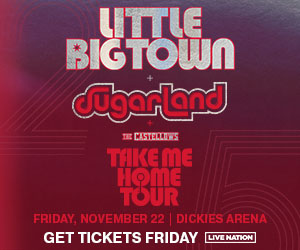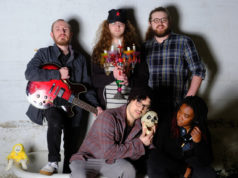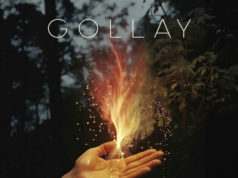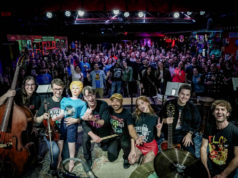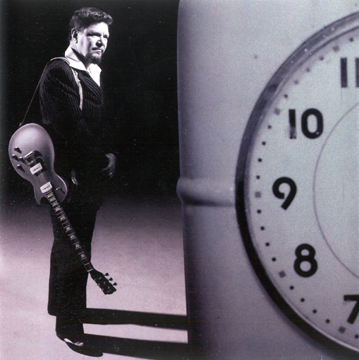 For the blues to be the blues, according to the protocol signed by Charley Patton, Son House, and Robert Johnson at a back porch summit in rural Mississippi in 1932, songs must be set in seedy neighborhoods and among gamblers, moochers, murderers, petty thieves, and women whose only purpose, it seems, is to bedevil men who play guitars or harmonicas. Comfortable chairs, sunlit beaches, or Girl Scouts simply do not make for compelling blues material. Rollicking piano rolls, shuffling, skipping beats, and screaming gut-tars seem to demand tales of rollicking laughter and crying, shuffling, skipping shoes (or bones), and the screams of agony and ecstasy, precisely the kind of real, genuine stuff that you can’t always find on the sunny side of the street. None of the subject matter is pretty, but it does have a certain distressed charm, especially when Hinkle shouts about it in his crisp hipster drawl. Even the occasional bloody homicide in his music goes down in epic, Shakespearean fashion. You’d think that such serious themes would be handled in more solemn, detached tones. There’s nothing glorious, as we’re frequently reminded, about murder. But music is pure metaphor, and by conjuring concrete ideas out of mere moods, musicians can illuminate the facts of life as effectively as CNN and more palatably. A spoonful of sugar and all that. Here are the big truths that Hinkle recasts through his songwriting, singing, and fretwork on his new, all-original album, Blues Now, Jazz Later: Romance is hard, life is short, and redemption is always just a holler away.
For the blues to be the blues, according to the protocol signed by Charley Patton, Son House, and Robert Johnson at a back porch summit in rural Mississippi in 1932, songs must be set in seedy neighborhoods and among gamblers, moochers, murderers, petty thieves, and women whose only purpose, it seems, is to bedevil men who play guitars or harmonicas. Comfortable chairs, sunlit beaches, or Girl Scouts simply do not make for compelling blues material. Rollicking piano rolls, shuffling, skipping beats, and screaming gut-tars seem to demand tales of rollicking laughter and crying, shuffling, skipping shoes (or bones), and the screams of agony and ecstasy, precisely the kind of real, genuine stuff that you can’t always find on the sunny side of the street. None of the subject matter is pretty, but it does have a certain distressed charm, especially when Hinkle shouts about it in his crisp hipster drawl. Even the occasional bloody homicide in his music goes down in epic, Shakespearean fashion. You’d think that such serious themes would be handled in more solemn, detached tones. There’s nothing glorious, as we’re frequently reminded, about murder. But music is pure metaphor, and by conjuring concrete ideas out of mere moods, musicians can illuminate the facts of life as effectively as CNN and more palatably. A spoonful of sugar and all that. Here are the big truths that Hinkle recasts through his songwriting, singing, and fretwork on his new, all-original album, Blues Now, Jazz Later: Romance is hard, life is short, and redemption is always just a holler away.
One of the strongest tracks of the disc’s 14, the heavy, ponderous “Brother Love” serves as a sly indictment of the traditional notion of salvation. The title character could be a hit-man or, worse, a lawyer. “When a broken heart needs fixin’ / Pay any price / But who do you call? / Don’t call a doctor / Doctor can’t help ya / There’s only one man that you can call … / Brother Love is everywhere.” The theme is driven home by the music, a muddy mix of gospel and blues over which Hinkle assumes an old country preacher’s reassuring but cagey voice. A groaning church organ trembles and floats, and the soft, slow notes from Hinkle’s guitar flicker like shiny pennies. The thick, loud beat and Paul Klemperer’s saxophone provide the dread. The unsettling ambiguity is delicious poison. “Jacks-bura Highway,” “Hell’s Half Acre,” “Lil’ Kim,” “Uncle Ray,” and several other local references figure into Hinkle’s lyrics. Even though the Fort isn’t seen as a blues mecca, he probably isn’t limiting his audience by so openly praising our fair Town of Cow. Most of the names he drops are in context, and his brand of self-described “Elec-Tex” offers a little bit for everybody, including our Neanderthalic neighbors to the east: rockabilly, Cajun, Tejano, country, jazz, even straight-ahead blues. (The name of Hinkle’s previous album is Straight-Ahead Blues? Note the question mark.)
There isn’t any rap on the disc, or indie-rock or techno, but only because Hinkle hasn’t gotten around to digging any of those styles yet. The shape of his signature, hodgepodge sound is almost a direct reflection of his travels. He spent a good part of the ’80s in the backing band of legendary eclectic pianist-singer Marcia Ball, and he’s played with Fort Worth daddy-o Johnny Mack and spent his youth hanging out at the BlueBird in Como and juke joints on “Jacks-bura Highway” with greats like Robert Ealey and Freddie Cisneros. Like most artists his age, fortysomething Hinkle has evolved into a singular presence patiently and over countless gigs and hours in the studio. What’s really odd, especially for an artist as experienced and popular as he, is that he hasn’t settled on a single guitar tone. B.B. King has his curvaceous Lucille, Stevie Ray Vaughan had his syrupy Strat, Eric Clapton his twangy Strat, Pat Metheny his synthetic strings, Allan Holdsworth his tremolo bar — you get the point. Hinkle jumps all over the place. On Blues Now, Jazz Later, he harks back to King with “Things Change,” a groovy uptempo jaunt wherein he also channels Chet Atkins’ dizzy, plucking fingers. On the snappy “Ain’t Gonna Make That Call,” Hinkle chugs and jangles through the gray area between smoove jazz and blues, a tiny kingdom governed by Robert Cray and Kevin Eubanks. Ol’ Bob Johnson comes through on the acoustic number “East Dallas Dagger,” Hinkle’s tip of the hat to the ghost of Stagger Lee, the man who fatally shot a friend in an argument in 1895 and launched a million songs. (Some of the most popular are Mississippi John Hurt’s “Stack O’Lee” from 1928 and The Clash’s “Wrong ’Em, Boyo.”) The only tone that’s hard to identify is on “Ain’t Looking Back No More” — it sounds like a dying car engine or a rusty chainsaw. (Neil Young, maybe?)
The album, true to its title, also delivers a little jazz. The cleverly titled “Bopped in the Mouth,” is a quiet bebop instrumental built out of brushes and Hinkle’s melancholy electric soloing. The other unabashedly jazzy number is “Minor Mule,” and perhaps the best way to describe it is Django Reinhardt shredding with the Hot Club of France in a Dodge City saloon circa 1880. Contrary to some bluesmen’s albums, Blues Now, Jazz Later isn’t just an assortment of vehicles for Hinkle to jam. It’s an assortment of vehicles for Hinkle and his accompanists to jam. Robert Cadwallader does some mean barroom piano on a few numbers, and on the Bill Haley-influenced “Love From a Fool,” sax-man Johnny Reno blows like Maceo. Blues Now, Jazz Later is basically one hep-cat’s song to his city, but don’t expect the Fort Worth Chamber of Commerce to clamor to use Hinkle’s disc as a promotional tool or anything. “Pistol-packin’ gamblers”? “Wild womanizers”? “Lonely hearts”? Only in Hinkle’s mind.
James Hinkle
Sat at J&J Blues Bar, 937 Woodward St, FW. 817-870-BEER.



